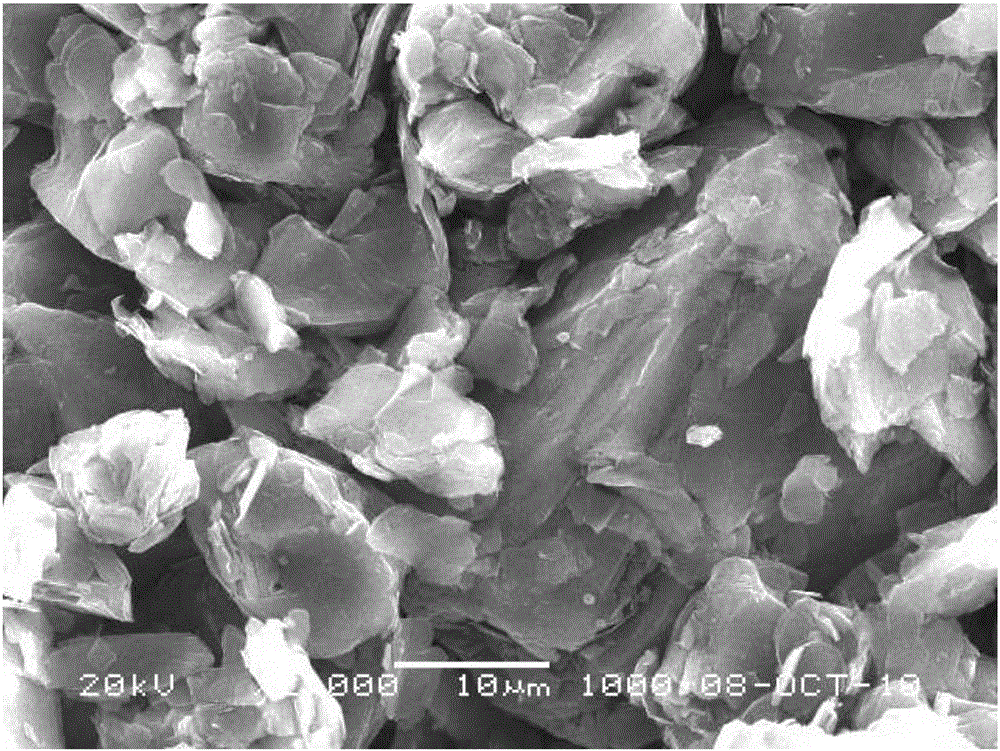Carbon composite material, preparation method for carbon composite material and battery
A technology of carbon composite materials and silicon-based materials, applied in battery electrodes, secondary batteries, circuits, etc., can solve problems such as poor cycle performance
- Summary
- Abstract
- Description
- Claims
- Application Information
AI Technical Summary
Problems solved by technology
Method used
Image
Examples
preparation example Construction
[0042] A method for preparing a carbon composite material, comprising the steps of:
[0043] S1. Coating a silicon-based material or a tin-based material on graphite particles to obtain a first core-shell material;
[0044] S2. Uniformly disperse the first core-shell material and the carbon precursor in the dispersant, and react at a temperature of 160-180° C. and a pressure of 0.15-0.3 MPa for 3-6 hours to obtain a carbon composite material.
[0045] In S1, the coating can choose chemical coating or physical coating according to the actual situation. Among them, chemical coating can adopt vapor phase deposition method, such as SiO 2 As the raw material, a low-vacuum tube furnace system is used, and Ar gas or N 2 Gas is used as the carrier gas, the reaction pressure is adjusted to 50000Pa, the temperature is 900-1200°C, and the reaction is carried out for 1-3h. Wherein, the physical coating may be ball mill coating or stirring coating, for example, the nano silicon fiber an...
Embodiment 1
[0055] 30g of natural graphite (average particle size: 25μm) was placed in a ball mill, and then 3g of nano silicon fibers (diameter less than 100nm, length 1μm-50μm) were added to obtain the first core-shell material.
[0056] The obtained first core-shell material was placed in a 1L tempered reaction kettle, and then 200g of cellulose aqueous solution (1wt%) was added; the reaction was carried out at 170°C and 0.25MPa for 6h.
[0057] The obtained carbon composite material is denoted as A1.
Embodiment 2
[0059] In a low-vacuum tube furnace system, 6 g of SiO 2 As a raw material, use Ar gas as a carrier gas, react at a pressure of 50,000 Pa and a temperature of 1,000°C for 2 hours, and wait for the first core-shell material.
[0060] The obtained first core-shell material was placed in a 1L tempered reaction kettle, and then 300g of sucrose aqueous solution (1wt%) was added; the reaction was carried out at 180°C and 0.15MPa for 5h.
[0061] The obtained carbon composite material is denoted as A2.
PUM
| Property | Measurement | Unit |
|---|---|---|
| particle size | aaaaa | aaaaa |
| thickness | aaaaa | aaaaa |
| thickness | aaaaa | aaaaa |
Abstract
Description
Claims
Application Information
 Login to View More
Login to View More - R&D
- Intellectual Property
- Life Sciences
- Materials
- Tech Scout
- Unparalleled Data Quality
- Higher Quality Content
- 60% Fewer Hallucinations
Browse by: Latest US Patents, China's latest patents, Technical Efficacy Thesaurus, Application Domain, Technology Topic, Popular Technical Reports.
© 2025 PatSnap. All rights reserved.Legal|Privacy policy|Modern Slavery Act Transparency Statement|Sitemap|About US| Contact US: help@patsnap.com



